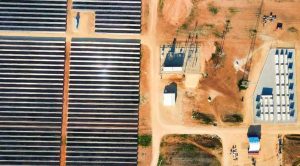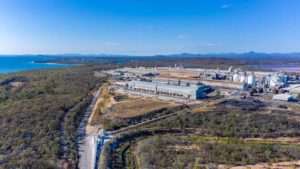The comprehensive win for Labor in the Northern Territory election on the weekend means that state and territory governments proposing ambitious renewable energy targets are now in the majority in Australia.
 The arrival of Labor in power in Darwin – along with its promised target of 50 per cent renewables by 2030 – will not mean a significant boost to renewable energy capacity in Australia, simply because the territory has such a small population and not a huge industrial power demand.
The arrival of Labor in power in Darwin – along with its promised target of 50 per cent renewables by 2030 – will not mean a significant boost to renewable energy capacity in Australia, simply because the territory has such a small population and not a huge industrial power demand.
But it will change the dynamics at the COAG energy ministers, adding another minister with support for renewable energy targets far greater than the current federal one, and removing a minister who was loudly supportive of coal seam gas and fracking technologies.
Reports on the election result suggest that CSG was a significant issue in the poll, and former chief minister Andrew Giles distinguished himself with some extraordinary attacks against solar power.
Giles used this attack – which we also pulled apart here – to justify his government’s decision to invest in a new gas fired generator in Alice Springs, without giving any thought to solar or battery storage.
Giles claimed that powering Alice Srings with solar and storage only (which no one was suggesting) would cost $2 billion – a figure that was patently absurd despite “costings” being prepared by the state-owned generator. The Country Liberal Party has so far won only one seat in the 25-seat assembly, and Giles is in danger of losing his Alice Springs seat.

The election of Labor means there are now five Labor states and territories in Australia with vastly more ambitious renewable energy targets than the Federal Coalition.
South Australia has a 50 per cent renewable energy target for 2025, but is effectively already at 45 per cent and will probably reach 50 per cent within a year, making it the leading region in the world for the incorporation of wind and solar.
Victoria has a 40 per cent target by 2025, and will soon announce plans for “reverse auctions” of the type that helped ACT sign enough contracts with wind and solar developers to meet its own target of 100 per cent of its electricity needs with renewable energy by 2020.
Queensland also has a 50 per cent renewable energy target for 2030, although it is yet to unveil how exactly it will achieve it.
This compares to the federal government’s renewable energy target, which does not expand beyond 2020 and will likely mean around 23.5 per cent is met with renewable energy. NSW and WA have no state-based schemes.
Tasmania, because of its huge hydro resources, is effectively 90-100 per cent renewable energy, although it is looking at adding more wind and solar – and a new inter-connector – to avoid the sort of issues it encountered last summer when its dams ran low and the cable to the mainland failed.
The balance of power will surely add an interesting dynamic to the COAG energy council, where the federal environment and energy minister is trying to persuade states to open up more gas exploration and production and, at the behest of fossil fuel lobby groups, in trying to pull the states into line on their targets.
There is little chance of that happening now, but there could be a more concerted push for the regulatory reforms that could accelerate the adoption of technologies such as storage and software, and the business models that support them, and loosen the regulatory hold of the incumbent coal and gas generators.
The state ministers are keen for the regulators to quicken their assessment of new rules. Last week, the Australian Energy Markets Commission said it would delay its assessment of new rules on the structure of wholesale electricity markets for more than six months.
The move is seen as crucial to introducing battery storage and other technologies at grid level and avoiding some of the high pricing events that affected South Australia and other states last month.










